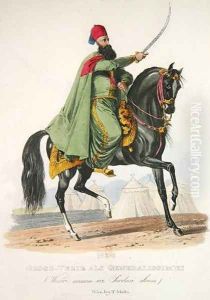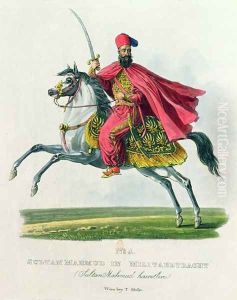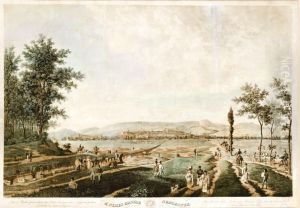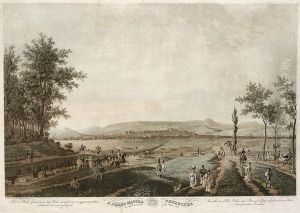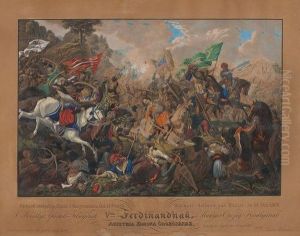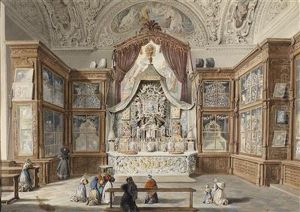Eduard Gurk Paintings
Eduard Gurk was an Austrian painter, born in 1801 in Vienna, Austria. He was best known for his watercolors and drawings, particularly those that depicted landscapes and scenes from the Austrian and Bavarian royal courts, as well as other European aristocracy. His work is characterized by its detailed and accurate representation of historical events and daily life of the elite during the early 19th century. Gurk's talent in capturing the essence and atmosphere of a scene made him a favored artist among the nobility, and he often received commissions from royal families.
Gurk's artistic journey began at a young age under the guidance of his father, who was also an artist. He further honed his skills at the Academy of Fine Arts Vienna, where he was exposed to the works of other great artists of his time. This education not only refined his techniques but also influenced his keen interest in portraying historical and cultural themes through his art.
Throughout his career, Gurk traveled extensively across Europe, capturing the landscapes, architecture, and the people he encountered. His travels were a significant source of inspiration, and he meticulously recorded his observations in his artworks. One of his notable commissions was to document the journey of Emperor Ferdinand I of Austria to the provinces of the Austrian Empire. These works not only serve as a historical record but also highlight Gurk's ability to blend artistry with documentary precision.
Despite his early death in 1841 at the age of 40, Eduard Gurk left behind a significant body of work that continues to be celebrated for its historical value and artistic merit. His paintings and drawings provide a vivid glimpse into the lives of 19th-century European royalty and the landscapes they inhabited. Gurk's contributions to art history are still recognized today, and his works are preserved in various museums and collections across Europe, attesting to his enduring legacy as a master of watercolor and historical scenes.
